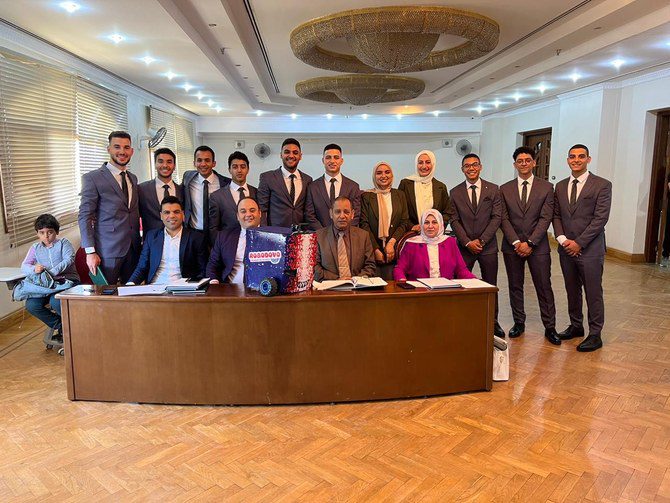TL;DR:
- Students from Kafr El-Sheikh University’s AI faculty design a robot for distributing exam papers.
- Robot powered by ROS and infused with AI to streamline paper dissemination.
- Utilizes machine learning to find optimal parking spots and Computer Vision Model to navigate.
- Enhances campus experience, saving time and effort while ensuring error-free deliveries.
- Future potential for tasks beyond paper distribution, like waste collection and event support.
Main AI News:
In a remarkable feat of innovation, a group of students from Kafr El-Sheikh University’s artificial intelligence faculty in Egypt has successfully engineered a cutting-edge robot that promises to revolutionize the way examination papers are disseminated throughout the campus. With meticulous attention to detail and a fusion of artificial intelligence, the team’s creation holds the potential to reshape administrative processes.
The brainchild of twelve brilliant minds, spearheaded by Ahmed Ragab Ibrahim El-Shennawy, the robot’s design is underpinned by the powerful Robot Operating System (ROS), infusing it with the capabilities necessary for this task. The primary objective, as Ahmed explains, was to address a tangible need within the university environment. “Our vision was to conceive a project that would be of direct use to the university. The robot, infused with artificial intelligence and powered by the ROS, streamlines the process of disseminating papers and documents across university buildings,” he remarked.
The operational prowess of this innovative marvel is orchestrated by two principal models. The initial model leverages machine learning, drawing insights from historical data to identify optimal parking spots for efficient distribution. Parameters such as distance, street width, and traffic patterns are meticulously analyzed to ensure the robot’s seamless navigation.
Moreover, the team has seamlessly integrated a Computer Vision Model into the robot’s framework. This sophisticated model deciphers complex road signs, ranging from turn indicators to stop signs and pedestrian signals, imbuing the robot with heightened decision-making capabilities. Haneen Mohammed Kamal Mohammed, another bright mind from the team, underscores the importance of this enhancement. “We’ve incorporated a Computer Vision Model, which deciphers road signs like turn indicators, stop signs, and pedestrian signals. This optimizes the robot’s decision-making as it navigates the university grounds,” she elucidated.
The far-reaching benefits of this ingenious creation extend beyond the immediate task of paper distribution. By leveraging cutting-edge technologies, the robot expedites deliveries, reducing the time and effort invested in shuttling papers between various campus buildings. In the words of Mohammed, “By harnessing cutting-edge technologies, the robot ensures swift and error-free deliveries, enhancing the overall campus experience.“
The potential applications of this robotic innovation extend well beyond its primary function. Aladdin Jamal Abbas Abdel Hamid, a valuable member of the team, envisions a future where robots of this kind play a pivotal role in various campus tasks. “Beyond distributing papers, this robot could be pivotal in tasks like waste collection, recycling, or even transporting equipment for university events,” he speculated. This forward-looking perspective not only reduces reliance on manual labor but also champions sustainability and efficiency throughout the campus ecosystem.
Conclusion:
This innovation showcases how technology-driven solutions can significantly enhance operational efficiency within educational institutions. The robot’s successful integration of AI, machine learning, and computer vision holds promising implications for the automation and optimization of various campus processes. As the market witnesses such advancements, businesses engaged in educational technology and automation are poised to find new avenues for growth and efficiency, all while contributing to a more sustainable and streamlined future.

